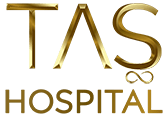
Rhinoplasty (Nose Job)
Rhinoplasty is a plastic surgery operation performed by making changes to the bone and cartilage structures in this structure of the nose shape.
Nose aesthetic also called nasoplasty, rhinoplasty is one of the most commonly performed aesthetic operations. Rhinoplasty is performed to eliminate deformities in the nose that exist congenitally, have occurred subsequently, or have arisen due to traumas. While the deformity is corrected in some cases only because it causes visual discomfort, it may also be necessary to correct it because it causes problems such as breathing disorders in most people.
Regardless of the reason for which aesthetic surgery will be performed, the primary goal of rhinoplasty is to make the respiratory tract in the nose work in the best way at the end of the operation. During the operation, one or more of the procedures of reshaping (reconstruction) the nose, eliminating deformities, or changing the shape of a part of it can be performed.
For people who consider having rhinoplasty, it should be checked whether the nasal tissues are suitable for aesthetic surgery during the examination to be performed by the surgeon. Because the slightest intervention has quite noticeable results, rhinoplasty operations must necessarily be performed by a surgeon who is an expert in his field.
Rhinoplasty, which can be applied to both men and women, is a complicated operation. Achieving the expected result in full requires a process of 6 to 12 months. This process varies according to the size of the operation on the nose, the structure of the tissues in the nose, or the severity of the problem. After surgery, small correction applications may be necessary for some of the patients to achieve the desired shape exactly.
What is Tipplasty?
One of the parts that most affects the appearance of the nose is the shape of the tip of the nose. Deformities commonly seen at the tip of the nose can be listed as follows:
- If the nose tip is wider than it should be
- Pinched nose tip appearance
- Asymmetric nostrils
- Droopy nose tip
- Uplifted nose tip
- Pointy shaped nose tip
In patients with the above-mentioned problems, tipplasty operations, which are a sub-branch of rhinoplasty, are used. In these operations, the bony part of the nose is not touched, only intervention are performed for the soft tissue and cartilage located at the tip of the nose. For this reason, they are easier operations than rhinoplasty.
The practices performed before and after surgery are almost the same as other rhinoplasty operations. The operation time is shorter and all procedures are completed in a period of 30-60 minutes. Patients are usually discharged on the same day. The recovery time is also shorter compared to rhinoplasty operations.
Why is rhinoplasty performed?
Rhinoplasty can be performed for functional or cosmetic reasons. The first of the reasons why rhinoplasty is performed is the occurrence of breathing problems due to a congenital or subsequently developed deformity in the nose. The disfigurement that causes breathing problems can be a visible disorder, as well as a disorder located on the inside of the nose that cannot be noticed from the outside. The second reason is that the person is uncomfortable with the appearance of his nose and wants to have a nose that looks different.
Conditions such as having a curvature or dislocation in the bone part of the nose, deformities observed in the cartilage structure, the nose being excessively large, asymmetry in the nose structure are among the reasons that require rhinoplasty surgery. Purely personal preferences play a role in operations performed for aesthetic purposes.
While some people are very satisfied with the appearance of their nose despite having a very large or protruding nose, some people may prefer a different nose image despite having a normal-looking nose structure. As a result, rhinoplasty operations are operations that can be performed due to health problems or personal preferences and are quite widely performed.
With surgical intervention, many changes in the structure of the nose can be carried out:
- Changing the size of the nose
- Changing the angle of the nose
- Straightening the dorsum of the nose
- Reshaping the tip of the nose
- Arrangement of nostril
If there is only cosmetic anxiety in rhinoplasty surgery without functional reasons, it is recommended to wait until the person completes the development of nasal cartilage. The limit for this development in girls is 15 years of age, while development in boys may take a little longer. If there are problems with breathing, rhinoplasty surgery can also be performed at a younger age.
How is rhinoplasty performed?
In rhinoplasty operations, the preoperative period is as important as the operation itself. During the interviews with the physician, it is first evaluated whether the patient is a suitable candidate for aesthetic surgery. At the same time, the physician and the patient should be able to fully explain their expectations and possible results through a mutual exchange of ideas.
The physician evaluates the medical history of the patient to be operated on, his/her ailments and the medications he/she is currently using. In the presence of health problems that may cause excessive bleeding, such as hemophilia, it may not be appropriate to perform cosmetic rhinoplasty surgery.
In the physical examination performed by the physician after the medical history is taken, the patient’s nasal skin, and internal and external structures are examined and the changes to be made are planned. Doctors can also refer to various blood tests and biochemical laboratory tests to decide the suitability of the patient before surgery.
Nose photos of patients who are scheduled to undergo surgery can be taken. These photos can be effective both in illuminating postoperative expectations and in guiding the physician during the operation. Another thing that patients should pay attention to is that non-steroidal anti-inflammatory drugs such as ibuprofen and aspirin should not be used for 2 weeks before and after surgery. These drugs can harm coagulation functions, increasing bleeding. It should not be forgotten how important it is for your health and recovery that your doctors know all the medications and supplements you use.
Another behavior that can negatively affect surgery and the postoperative period is tobacco use. Cigarette smoke both slows down the healing process and causes contractions in the blood vessels because of the nicotine content, which leads to a decrease in oxygen and blood supply to the tissue during the healing period. In order for the healing process to be carried out in a healthy way, it is recommended to stop using tobacco before and after surgery.
Rhinoplasty surgery is a type of operation that is mostly performed under general anesthesia. In simple rhinoplasty operations that require only small touches, local anesthesia can also be applied according to the surgeon’s preference. While the operation takes 2 hours on average, a rhinoplasty operation usually takes 1 day, along with preoperative preparations and postoperative applications and observation times.
There are 2 different rhinoplasty techniques that are widely preferred. In the first of these, open rhinoplasty, a small incision is opened between the nostrils and the surgeon’s viewing angle is expanded thanks to this incision. Generally, open rhinoplasty technique is preferred in people with advanced nasal deformity or who have previously undergone a different rhinoplasty operation. The main advantage of the open technique is that the viewing angle is wider. However, the healing process is longer and the problems such as edema and bruising that occur after the operation are larger in size.
In closed rhinoplasty, which is another technique, the incision made is adjusted to remain in the nostrils. The surgeon’s field of view is small, but the recovery time is shorter and there are no suture marks on the nose after the operation. The closed rhinoplasty technique is generally preferred for the correction of deformities of a smaller size.
